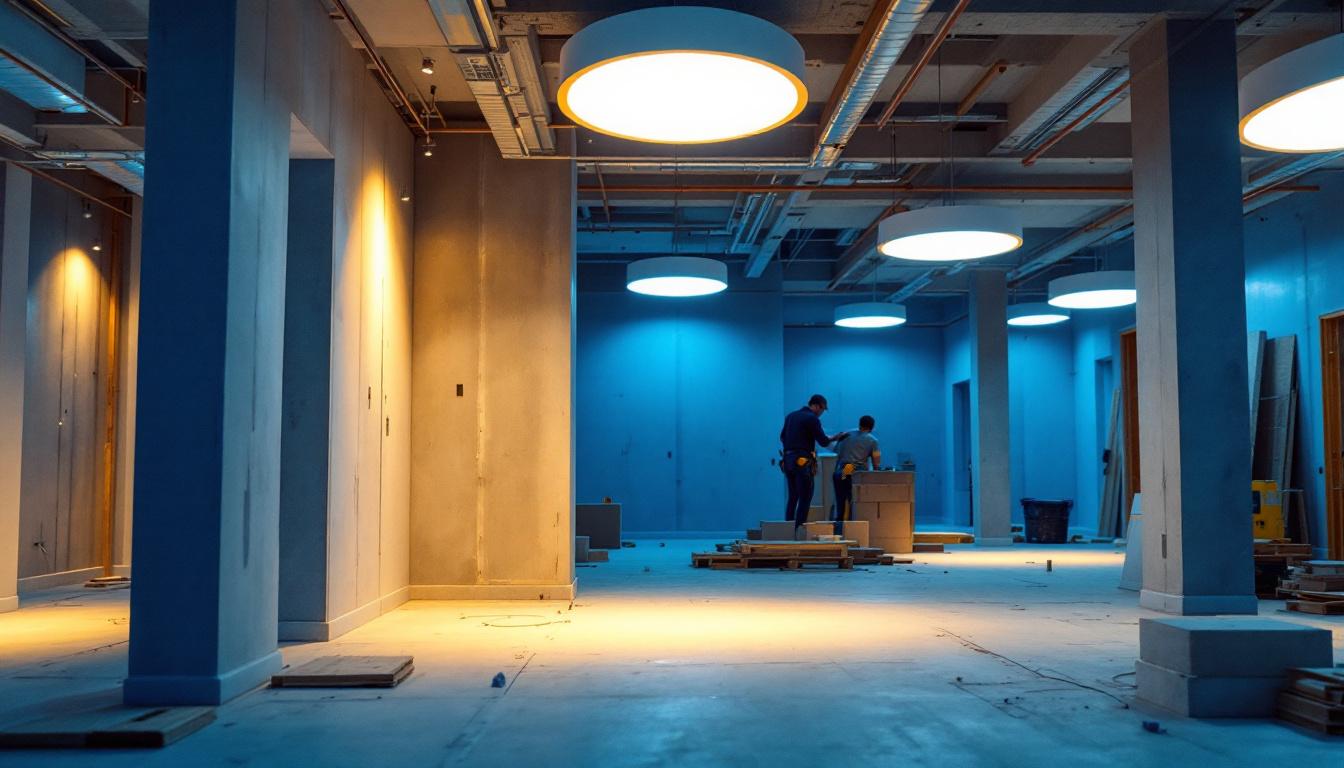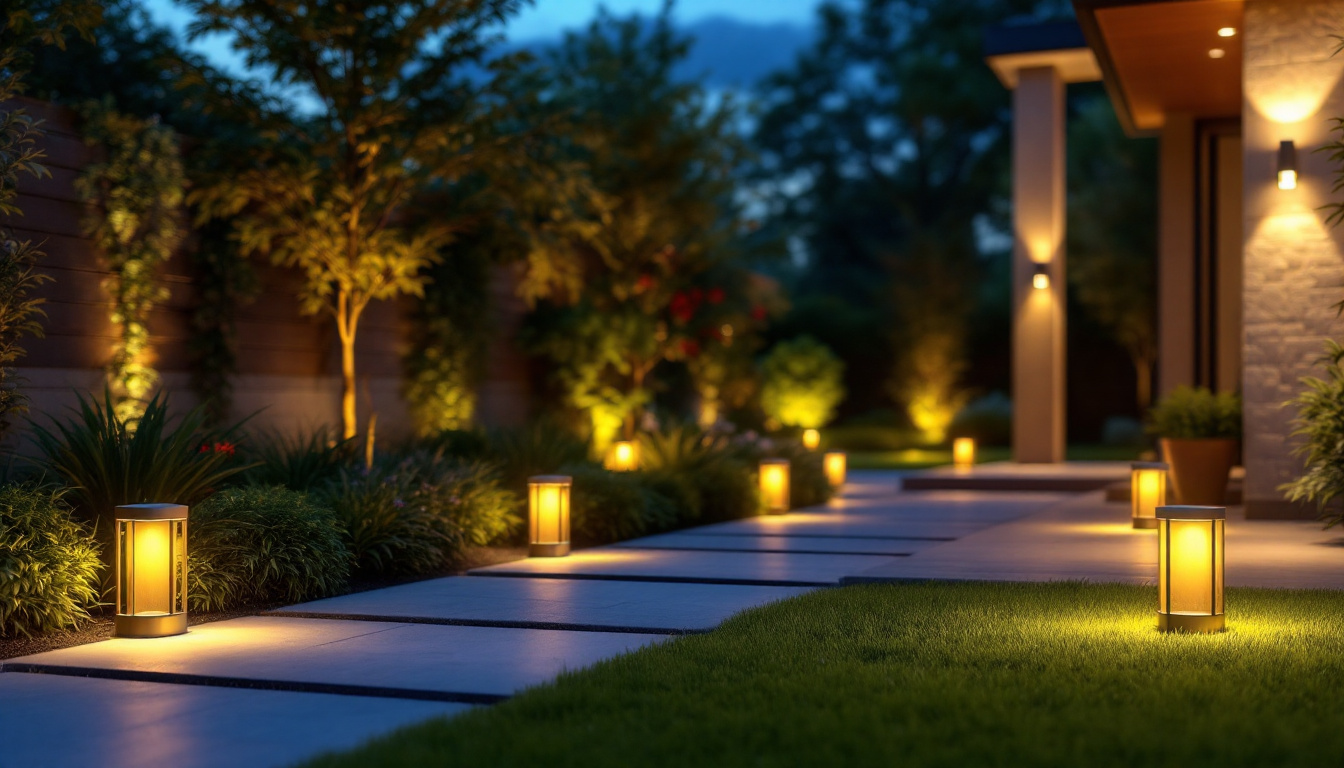
As the demand for modern and efficient lighting solutions continues to rise, recessed lighting has become a staple in new construction projects. For lighting contractors, understanding the essentials of recessed lighting is crucial to delivering quality installations that meet client expectations and comply with industry standards. This article will explore the key aspects of recessed lighting, including design considerations, installation techniques, and energy efficiency.
Recessed lighting, often referred to as can lighting or pot lighting, involves fixtures that are installed into the ceiling, creating a clean and unobtrusive look. This type of lighting is particularly popular in residential and commercial settings due to its versatility and ability to provide ambient, task, or accent lighting. The seamless integration of recessed lights can elevate the aesthetic of any space, making it feel more open and inviting while also serving practical purposes.
For lighting contractors, it is essential to grasp the different components of recessed lighting systems. These include the housing, trim, and bulb types, each playing a vital role in the overall functionality and aesthetic appeal of the installation. Understanding these components not only aids in proper installation but also helps in advising clients on the best options to meet their specific needs and preferences.
The housing is the structural part of the recessed light that holds the bulb and connects to the electrical system. It can be new construction or remodel housing, depending on whether the installation occurs in a newly built structure or an existing one. Choosing the right housing type is crucial for ensuring compatibility with the ceiling type and insulation. Additionally, some housings are designed to be airtight, which can improve energy efficiency and reduce heating and cooling costs in the long run.
The trim is the visible part of the fixture that completes the look. Trims come in various styles, colors, and finishes, allowing contractors to customize the lighting to suit the design preferences of their clients. Additionally, the choice of trim can affect the light distribution and intensity. For instance, baffle trims can help reduce glare, while reflector trims can enhance brightness, making them ideal for specific applications such as artwork illumination or task lighting in kitchens.
Lastly, the bulb type plays a significant role in the performance of recessed lighting. Options include LED, incandescent, and fluorescent bulbs, each with distinct characteristics regarding brightness, energy efficiency, and lifespan. Selecting the appropriate bulb is essential for achieving the desired lighting effect while maintaining energy efficiency. Moreover, advancements in LED technology have led to a wide range of color temperatures, allowing homeowners to create the perfect ambiance, whether they desire a warm, cozy glow or a bright, daylight-like illumination. This versatility not only enhances the functionality of spaces but also contributes to the overall mood and atmosphere, making it a critical consideration in any lighting design project.
When planning a recessed lighting layout, several design considerations must be taken into account. These include the purpose of the lighting, the size of the space, and the overall aesthetic of the environment. A well-thought-out design will enhance the functionality and beauty of the space.
Understanding the intended use of the space is fundamental in determining the type and placement of recessed lighting. For instance, task lighting in a kitchen may require brighter, focused light, while ambient lighting in a living room might call for softer, diffused illumination. Identifying the primary functions of each area will guide the selection of fixtures and their arrangement.
Additionally, accent lighting can be used to highlight architectural features, artwork, or decorative elements. This requires careful placement and selection of trims to ensure the desired effect is achieved without overwhelming the space.
The size and layout of the room significantly influence the number and placement of recessed lights. In larger spaces, a greater number of fixtures may be necessary to provide adequate illumination. Conversely, smaller rooms may require fewer lights, spaced appropriately to avoid a cluttered appearance.
Moreover, the ceiling height plays a critical role in determining the spacing of recessed lights. Generally, a rule of thumb is to space the fixtures approximately 4 to 6 feet apart for standard ceiling heights. However, adjustments may be necessary based on the specific requirements of the space.
The aesthetic appeal of recessed lighting is another crucial factor for lighting contractors. The choice of trim and bulb color temperature can dramatically affect the ambiance of a room. Warmer color temperatures create a cozy atmosphere, while cooler tones can enhance a modern and sleek look.
Furthermore, the integration of recessed lighting with other design elements, such as ceiling textures and wall colors, can elevate the overall aesthetic. Contractors should work closely with clients to ensure that the lighting complements the interior design vision.
Proper installation techniques are essential for achieving optimal performance and safety in recessed lighting systems. Lighting contractors must be familiar with the various installation methods and best practices to ensure a successful outcome.
Before installation, it is vital to assess the electrical requirements of the recessed lighting system. This includes determining the appropriate circuit load and ensuring that the wiring meets local codes and regulations. Contractors should also consider the use of dimmer switches, which can enhance the versatility of the lighting system.
When installing recessed lights, it is crucial to follow the manufacturer’s guidelines regarding wiring and connections. Ensuring that all connections are secure and properly insulated will help prevent electrical hazards and ensure long-lasting performance.
Cutting openings in the ceiling for recessed lights requires precision and care. Contractors should use the appropriate tools and techniques to create clean, accurate cuts that match the housing dimensions. It is also essential to consider the location of joists and other structural elements to avoid compromising the integrity of the ceiling.
Once the openings are made, the housing can be securely mounted, ensuring that it is level and aligned correctly. Proper installation of the housing is crucial for achieving the desired lighting effect and preventing any future issues.
Insulation is a critical consideration when installing recessed lighting, particularly in new construction. Proper insulation helps maintain energy efficiency and prevents heat loss. Contractors should ensure that the housing is compatible with insulation, particularly in situations where insulation must be placed around the fixture.
Additionally, airflow is an important factor to consider. Some recessed lights are designed to be airtight, while others may allow for airflow. Understanding the implications of each type is essential for maintaining energy efficiency and preventing moisture buildup in the ceiling cavity.
As energy efficiency becomes increasingly important in construction, recessed lighting offers several advantages. Lighting contractors should be well-versed in the various options available to create sustainable lighting solutions that meet client needs while minimizing environmental impact.
LED bulbs have gained popularity in recessed lighting due to their energy efficiency and long lifespan. Compared to traditional incandescent and fluorescent bulbs, LEDs consume significantly less energy and produce less heat, making them an ideal choice for modern lighting installations.
Moreover, LED technology continues to evolve, offering a range of color temperatures and brightness levels. Contractors should stay informed about the latest advancements in LED technology to provide clients with the best options for their specific applications.
Integrating smart lighting solutions into recessed lighting systems is another way to enhance energy efficiency. Smart lighting controls allow users to adjust brightness levels, set schedules, and even control lighting remotely via smartphone applications.
By incorporating smart technology, contractors can offer clients a more customizable and efficient lighting experience. This not only adds value to the installation but also aligns with the growing trend towards smart home technology.
Compliance with local building codes and safety standards is paramount in any lighting installation. Lighting contractors must be aware of the regulations governing recessed lighting to ensure that their work meets all necessary requirements.
Each jurisdiction may have specific building codes that dictate the installation of recessed lighting. These codes often cover aspects such as electrical wiring, fixture placement, and insulation requirements. Contractors should familiarize themselves with local codes to avoid potential fines or rework.
Additionally, ensuring that all materials used in the installation are compliant with safety standards is crucial for protecting both the contractor and the client. This includes using fixtures that are rated for the specific application and ensuring that all electrical components meet safety certifications.
Fire safety is another critical aspect of recessed lighting installations. Contractors should select fixtures that are rated for use in insulated ceilings to prevent overheating and potential fire hazards. Proper spacing and placement of fixtures can also help mitigate fire risks.
Moreover, it is essential to educate clients about the importance of regular maintenance and inspection of their recessed lighting systems. This includes checking for signs of wear, ensuring that bulbs are functioning correctly, and addressing any issues promptly to maintain safety.
Recessed lighting is an essential component of modern construction, offering versatility, aesthetic appeal, and energy efficiency. For lighting contractors, understanding the key aspects of recessed lighting—from design considerations to installation techniques and compliance—is crucial for delivering high-quality installations that meet client expectations.
By staying informed about the latest trends and technologies in recessed lighting, contractors can enhance their skills and provide clients with innovative solutions that elevate their spaces. Ultimately, a thorough understanding of recessed lighting will not only improve the quality of installations but also contribute to the overall success of lighting contractors in the competitive construction industry.
Ready to take your recessed lighting installations to the next level? Look no further than LumenWholesale for all your lighting needs. With our commitment to quality, affordability, and convenience, we provide lighting contractors with spec-grade products that meet the highest industry standards. Say goodbye to inflated markups and enjoy the benefits of wholesale pricing, free shipping, and a vast selection of premium lighting options. Elevate your new construction projects with the best value in lighting solutions. Wholesale Lighting at the Best Value is just a click away. Partner with LumenWholesale today and light up your projects with confidence.

Discover the essential compliance guidelines and top picks for solar lamps that every lighting contractor should know.

Discover the crucial role exterior can lights play for lighting contractors in enhancing outdoor aesthetics and functionality.

Discover the often-overlooked benefits and challenges of square bulbs in the lighting industry.

Discover innovative strategies employed by smart lighting contractors to optimize power cord plug installations.